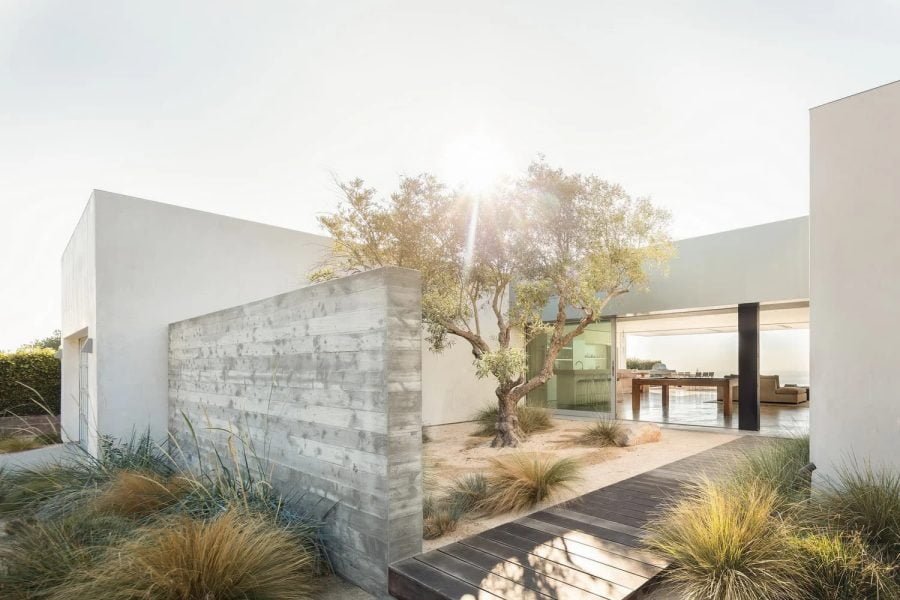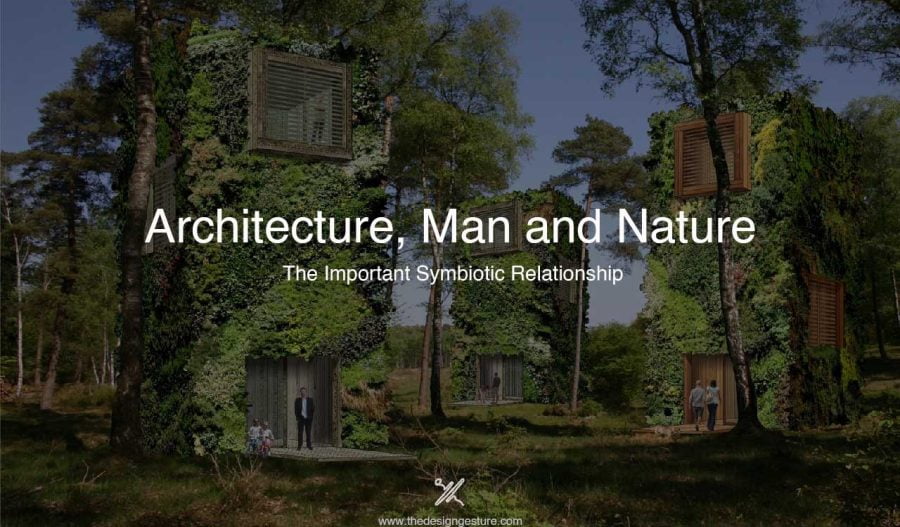Table of Contents
Introduction
Among these intricate threads, one of the most compelling relationships we can unravel is the intricate bond shared by people, architectural marvels, and the environment. A Timeless Tale of Architecture and Nature
Envision the connection between architecture and nature as an enduring narrative, much like an ageless love story. Just as two souls engage in a dance of affection, architecture, and nature partake in a profound union. Yet, it is often nature that lends its guiding hand.
Our world is a magnificent mosaic of connections.
Elements of nature, once cherished primarily for their aesthetics, have assumed new roles. Nature has seamlessly integrated into our architectural designs, showcasing that when architecture and nature collaborate, they both thrive in harmony.

The Ever-Changing Scene: Laws and Our Understanding
The intricate dance between architecture and nature is transforming, influenced by changes in our laws and a growing awareness of the effects of our decisions. The unrestricted growth of our cities and its environmental impacts emphasize the need for sustainable development.
New laws are gradually reshaping our landscape, pushing architects and urban planners to incorporate sustainable designs. This shift is driven by legal requirements and economic pressures.
It’s no longer sufficient to merely erect buildings; the focus now is on crafting environments that nurture and elevate the human way of life
The Transformation of Urban Landscape
In the traditional view of an urban landscape, concrete and steel structures dominate the scene. Instead of imposing themselves upon the natural world, buildings are now finding ways to coexist within it. The green roofs of modern buildings are like secret gardens, concealed from the bustling city below.
One such example is the London Grassroots Community Centre.
The aim here extends beyond the mere construction of buildings; it’s about crafting a sustainable urban ecosystem. Each building serves as a vital piece in a larger ecological puzzle.
As Brenda and Robert Vale aptly propose, “Green architecture goes beyond the single structure on its plot; it must encompass a sustainable rendition of the urban milieu.” It’s about recognizing that a city transcends a mere collection of buildings; it represents an intricate system of living, working, and leisure.
Architectural Mimicry and Sustainable Innovation in Nature
Another fascinating aspect of this dance is architectural mimicry and innovation. This approach has its roots in the architectural movements of the mid-20th century, such as mega structural and cellular architecture.
In these movements, the emphasis was on high variety in dwelling forms, flexibility in planning systems, and the dynamism of architectural expression. Buildings aimed to imitate natural terrain topography and were considered sustainable even before the term became a trend. Structures like the Centre Jeanne-Hachette or Cite du Parc in Ivry-sur-Seine from the 1970s embodied this approach, imitating natural landscapes within a city environment.
This architectural concept has a modern counterpart in structures like the multifamily residential and office building designed by Delugan and Meissl in Vienna. this building not only focuses on sustainability as a technological aspect but also incorporates lifestyle and psychological factors into its design. The integration of green roofs for ecological insulation and the design’s hilly shape to provide natural lighting to all its office spaces are more than just eco-friendly features; they enhance the human experience within the cityscape.
Creating Transition Spaces: Blurring Boundaries
In the complex tapestry of urban environments, it is becoming increasingly clear that contact with nature is a fundamental necessity. Spending extended hours in sterile interior environments can lead to various physical and mental health conditions. The rapid advancement of communication technologies, while enhancing connectivity, has inadvertently diminished direct interpersonal contact. The answer to this challenge lies in encouraging people to utilize exterior spaces for recreation and social interactions.
Modern architecture now seeks to provide an environment that is not only functional but also aesthetically pleasing. This is a space where the relationship between humans and nature is restored, reminiscent of Japanese architecture, as described by Tadao Ando. In this context, “a sensibility that de-emphasizes the physical boundary between residence and surrounding nature and establishes instead a spiritual threshold” is central.
This leads us to the concept of “transition spaces,” a new kind of architectural space that forms a soft edge between the building, its interiors, and the city. They are not limited to the exterior but are incorporated into the building itself, its surroundings, and the interior.
The Linked Hybrid Complex as an Example of Transition Space
Steven Holl’s Linked Hybrid complex is an example of transition space.
This 220,000-square-meter pedestrian-oriented complex within Beijing’s old city wall stands as a testament to a modern, open, and appealing approach to urban building.
Unlike the prevailing trend of closed, private urban spaces in China, the Linked Hybrid complex is a breath of fresh air. It’s a place where the surrounding environment is not only connected to but is an integral part of the complex itself.
The outside and interior spaces are seamlessly integrated, resulting in a fluid transition that invites investigation. The pedestrian routes, both within and outside the complex, are laid out in a grid pattern rather than a straight line, allowing for spontaneous interactions and unexpected discoveries.
A key design principle behind the Linked Hybrid complex is the creation of one of the largest green residential structures globally. This feat is achieved through innovative solutions, such as geothermal wells that provide cooling in summer and heating in winter. The narrative of the complex is complemented by the symbolic shaping of its green spaces. The earth excavated during construction forms five mounds, each corresponding to a stage of human life. These mounds embody the intricate relationship between architecture and nature, creating a holistic environment that welcomes all.
Human Scale: Soft Edge
In our journey through life, we are in constant contact with the space that surrounds us. This space is not static; it’s a dynamic entity filled with living elements of nature and inanimate structures of architecture. Our existence in society is a profound interaction with this space, a space that is continually evolving.
Understanding this space at the human scale is a pivotal aspect of architectural design. Professor Gehl’s books, “Life Between Buildings,” “Human Scale,” and “Cities for People,” emphasize the need to approach urban design systematically and with a human-centric perspective.
The construction of smooth borders between buildings and their environment is a fundamental part of this strategy. These smooth edges are critical for creating a connected and welcoming public area. One method is to incorporate natural features into the design.
The Influence of Soft Edges
Creating these soft edges is not just about aesthetics; it’s about enhancing the human experience within the urban environment.
As Professor Gehl emphasizes, townscape public spaces become more attractive and inviting when they are designed with the support of public transportation. This results in more natural activity within the city, promoting social interactions and ultimately making the city more sustainable.
Inspiration for the Future
These architectural concepts have found their physical form in structures like the Swiss Re building in Munich and the Rolex Learning Center in Lausanne.
Both of these constructions are open-access architectural zones that can be used for several purposes. They demonstrate how architecture and the environment may collaborate to produce a mood that blurs the distinction between the man-made and natural worlds.
Conclusion
The symbiotic relationship of architecture, humans, and nature is a captivating ballet of creation, adaptation, and cooperation. This intricate dance is taking place in sustainable design and architecture, where environmental regulations, legislation, and human consciousness are changing the landscape of our built environments. The days of towering, rigid constructions dominating the natural environment are giving way to a new era.
Architecture in this age is inspired by nature, reflecting its forms and processes.
Buildings are no longer distinct entities, but rather interwoven parts of a greater urban ecology. Furthermore, this dance transcends the physical form of architecture. It includes transition spaces that lessen the transition between the developed and natural environments.




